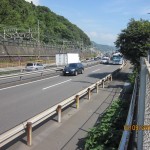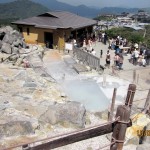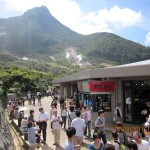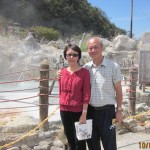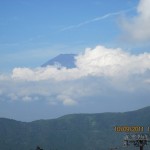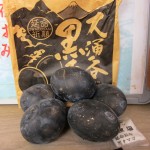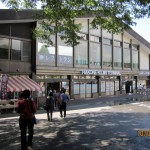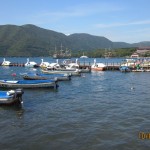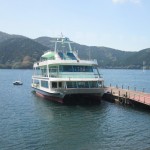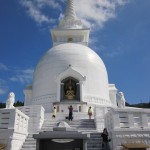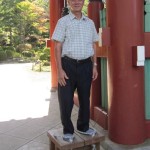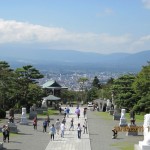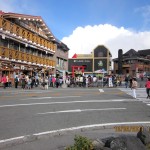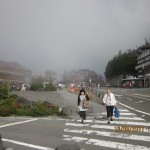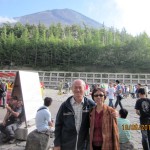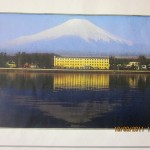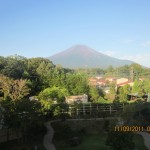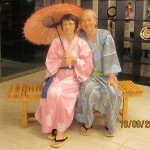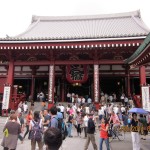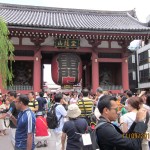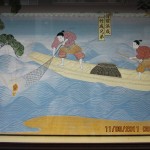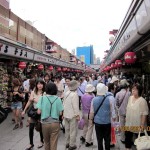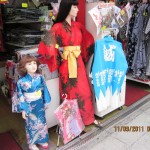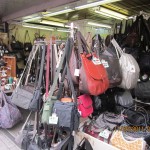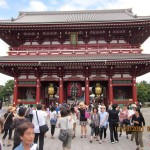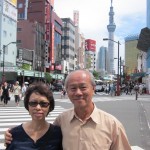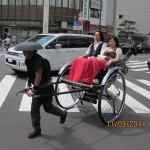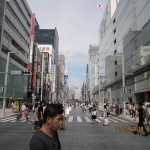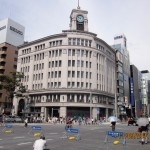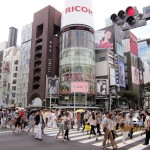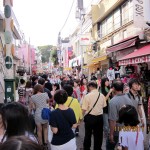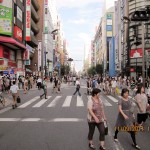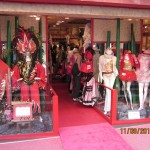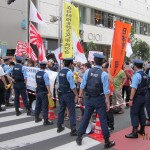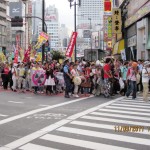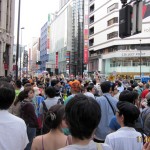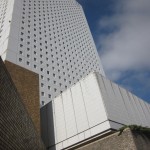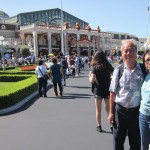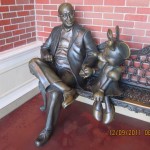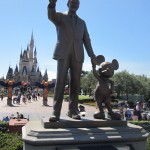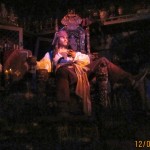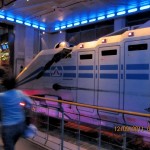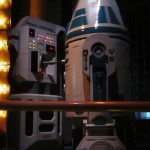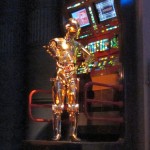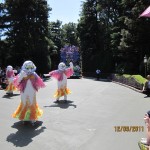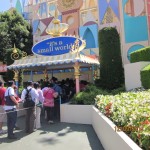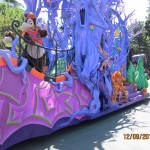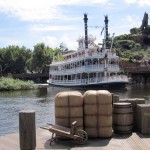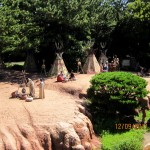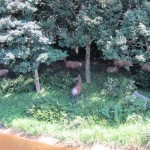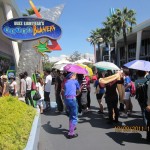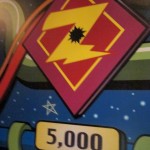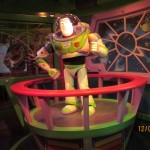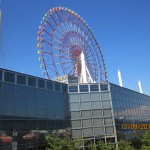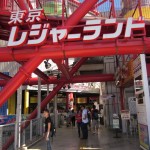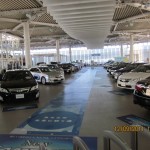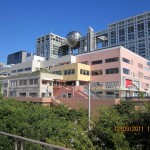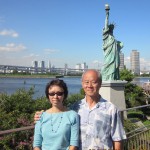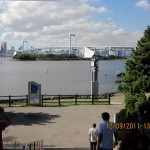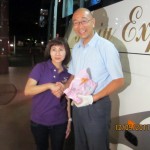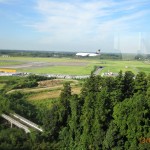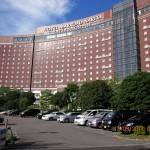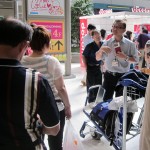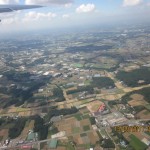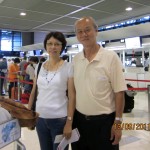Japan Travel II
(continued from Japan I)
Japan Travel II
Day 4 Saturday 10 September 2011
After breakfast we left Okura Hotel in Hamamtsu at 8 a.m. Our next destination was the Fuji-Hakone-Izu National Park. While travelling on the busy Tomei Expressway, we saw the scenic country-sides.
Owakudani Valley
Two hours later, we reached a volcanic valley known as Owakudani Valley which is also known as “Valley of Hell”. This valley is in the caldera of Hakone Volcano. This large volcano was formed about 500,000 years ago. Later, a large caldera of 10 km in diameter was formed inside. Its continuous volcanic activity for 500,000 years has produced the present landscape of some small conical volcanoes, including Mt. Kamiyama(1,438m) and Mt. Kanmurigate(1,412m), and a lake(Lake Ashi) in its two calderas, an old and new one.
Black Eggs
Hakone Volcano is still an active volcano. It is part of the Fuji-Hakone-Izu National Park. When we were in Owakudani Valley, we saw steam coming out from the cracks in the ground and smelt unpleasant gases of sulphur dioxide and hydrogen sulphide. There was a pool of hot spring water near Mt. Kamiyama and Mt. Kanmurigate. A shopkeeper of Tamago-chaya Teahouse located near the pool used it for boiling eggs. After boiling the egg-shells turned black. The hard-boiled eggs were sold to tourists like hot cakes.
From the valley we could see the Japan’s iconic cone-shaped mountain, Mt. Fuji, in the distance, but it was partially covered with clouds then.
Lake Ashi
Later, we went downhill to a restaurant at the Hakone Kojiri Terminal for a Japanese meal. At this terminal, tourists can take ropeway to Souzan near the Owakundani Valley. The terminal is by a caldera lake in Hakone known as Lake Ashi that is 6 km long and between 0.6 and 1.5 km wide. Tourists can take a leisure boat cruise across the lake, enjoying the picturesque and serene natural beauty of the lake. Besides, they can see the charming Fuji Mountain which is several kilometres away.
Peace Park(Heiwa Koen)
White Buddhist Shrine
After lunch at Hakone Kojiri Terminal, we went to Peace Park(Heiwa Koen) near Gotemba City to see a white Buddhist shrine with four golden Buddha statues on a low hill. It resembles an Indian stupa and is believed to house some Buddha’s relics. The short path leading to the shrine is lined with 7 stone statues of different mythical lions on each side.
The Peace Park has many cherry and maple plants. The cherry plants will bloom in spring whereas maple leaves will change from green to multi-colours in autumn, making the park look like a beautiful paradise in the two seasons attracting more tourists to the place.
Standing in front of the white shrine, I could see the Gotemba City and the partially cloud-covered Mt. Fuji in the distance.
Large Wooden Clogs
Before we left the park, I was attracted to a pair of large Japanese wooden clogs near the park entrance. I wore them, but I could not move them at all as they were stuck to the floor, permanently.
5th. Station of the Subaru Trail of Mt. Fuji
Then we were off again. This time we travelled up the highest mountain of Japan, Mt. Fuji, which is 3776m above sea-level. But our bus could only go up to the 5th. Station of the Fuji-Subaru Trail leading to the Mt. Fuji summit. This station is 2305m above sea-level. There are a few buildings at the station providing accommodation, food and beverages.
Mt. Fuji
Many tourists and mountain-climbers could be seen there. The climbers at this station may need over 6 hours to climb to the summit. Standing on the station ground, I could see the barren peak of Mt. Fuji, clearly. Occasionally, a passing cloud would block the view of the mountain. Mt. Fuji is cone-shaped with a base diameter between 35 and 40 km. Dormant for 250 years, its grace, charm and beauty draw millions of visitors from all over the world.
Fujimihana Hotel
Having spent a couple of hours at the 5th. Station enjoying the sights of the beautiful mountainous landscapes, we went down the mountain to a hotel, Fujimihana Hotel, that is by a lake, Yamanaka Lake, in Yamanashiken. After having checked in at the hotel, we changed into “yukata” and went straight to a pool of hot spring water of 41 degrees Celsius to relieve our body muscles of fatigue and pain. (A “yukata” is a Japanese casual summer clothing.) An hour later, we went to the hotel restaurant to savour both Japanese and Taiwanes dishes. We stayed for a night at this hotel in a tranquil place.
Day 5 Sunday 11 September 2011
In the morning, when I woke up and drew a curtain open in my hotel room, I was pleasantly surprised to see the majestic-looking Mt. Fuji several km away. As the view was spectacular, I quickly snapped a few photos of it before being covered with clouds.
Sensoji Temple or Asakusa Temple
After breakfast, we left the hotel for Tokyo City. It was a pleasant 1½ hour-journey from the quiet rural areas to the hustle and bustle of the urban areas of Tokyo. On arrival at Tokyo City, we went straight to the oldest Buddhist temple known as Sensoji Temple or commonly called Asakusa Kannon Temple. Located in the Asakusa area, it houses a statue of Bodhisattva Kannon or Buddhist Goddess of Mercy. The Japanese Buddhists believe that He is a great saviour to the sufferers in the world.
Discovery of a Buddha Statue
Legend has it that the statue was found by two fishermen who were brothers in their cast net in Sumida River in 628. The head village, Hajino Nakatomo, recognized it as a Kannon, the Goddess of Mercy, and kept it in his house for his villagers to worship. Then in 648 his house was rebuilt and made into a temple, housing the statue. Later, fire destroyed the temple several times, and it had to be rebuilt each time it was destroyed. In 1945, it was bombed and destroyed during air-raids in WWII. Later, it was built again.
Kaminarimon(Thunder Gate)
The present temple was built in 1958 with donations from generous devotees. Known as Sensoji Temple or Asakusa Temple, it attracts visitors from near and far. The entrance to the temple is a large gate, Kaminarimon(Thunder Gate). In the middle of this gate hung a large red paper lantern with two large Japanese characters which mean “Thunder Gate”. Standing on the left of the lantern is a large statue of God of Thunder” and another statue of “God of Wind” on the right. The gate leads visitors to a 250m-long street, Nakamize Street.
Nakamize Street
Nakamize Street is lined with many interesting kinds of shops on both sides. The shops sell souvenirs, traditional clothes, shoes, hats, umbrellas, food, drinks, and many more. It was established in the 17th. century. But the present two rows of single-storey shops were rebuilt after the Great Kanto Earthquake in1923. It was crowded with visitors when I was there.
Hozomon Gate
Nakamize Street ends with another red gate which is larger and higher than the first one. It is known as Hozomon Gate. Built in 1964, it has a large red lantern hanging in the middle. Besides, there is a smaller black and gold-coloured lantern and statue of Deva King on each side of the large lantern. The two large Deva Kings are supposed to be the guardians of Sensoji Temple. The upper part of the gate houses a complete collection of the Buddhist scriptures. A short distance from this gate is the main temple, Sensoji Temple or Asukasa Kannon.
Sky Tree
While standing in front of Kaminarimon Gate, I watched a continuous flow of people into the gate and rickshaw-pullers busy doing their jobs in the street. Besides, I saw a tall tower which was 1 km away in Sumida Area. It is known as Sky Tree. It is the tallest tower in the world with a height of 634m, and the second tallest structure in the world after Burj Kalifa(828m) in Dubai. It has a TV and radio broadcasting station, restaurant and observatory tower. It will be ready for use next year, 2012.
Ginza Street
Later, we left the Asakusa Area and went to Tokyo’s famous shopping street, Ginza Street. It attracts not only local people, but also foreign tourists. It is a long wide street flanked by distinctive department stores and shops on both sides of the road, selling luxury goods of local and western popular brands.
Ginza Wako Building
As it was a weekend, Sunday, the road was closed to traffic, expecting large influxes of visitors in the afternoon and evening. The long road became a pedestrain walkway with chairs and tables fixed with large umbrellas in the middle for tired visitors to rest. While walking down the road, I noticed there were no old buildings to be seen there. But when I came to Ginza 4-Chome,I saw a large one at the junction of Chuo and Harumi Dori. Known as Ginza Wako Building, it was established in 1881 and has a Seiko clock tower built in 1932. It looks like an old European building that stands out in the street. It sells world-class goods, like watches, jewellery, handbags, porcelain, dishware, etc
Harajuka Area
After spending one and a half hours browsing some of the stores and shops along Ginza Street, we left for another shopping area, Harajuka Area. In this area there are two main shopping streets, viz. Omotesando and Takeshita Street. But we visited Takeshita Street as it is an interesting one where young girls like to meet and show off their fanciful clothes, hairstyles and footwears, e.g. cyber-punk, cosplay, ganguro and other out-of-the world styles. Besides, there are shops in this narrow and crowded street that draws young girls to buy clothes of the latest fashions.
Shinjuku Area
After spending some time in Takeshita Street, we left for another well-known area called Shinjuku. It is Tokyo’s commercial and metropolitan government administrative hub. The main attractions that draw visitors to this area are entertainment and shopping.
The most popular shopping street in this place is Shinjuku Street which is lined with multi-storey buildings and skyscrapers. When the street is closed to traffic during weekends, it becomes a busy pedestrian walkway.
Anti-Nuclear Plant Protestors
When we were in the Shinjuku Area we were surprised to see some peaceful processions of anti-nuclear plant protestors. The protestors from all ages and walks of life were strongly against the government’s
establishment of nuclear powered-plants in Japan. They felt those plants were unsafe, after a nuclear plant in Fukushima was badly destroyed by a 9-magnitude earthquake and giant tsunami on March 11 2011 polluting the environment with health-hazard radioactive substances. Lots of police were around, watching them closely.
In the evening, before we left Shinjuku area, we had a last look of the main shopping and entertainment street. Then we left for a hotel, Sunshine City Prince Hotel, in Minato-ku, Tokyo, where we retired for a night.
Day 6 Monday 12 September 2011
Disneyland Tokyo
After breakfast we went to Disneyland Tokyo in Urayasu in Chiba near Tokyo. Opened in 1983, it is Japan’s most popular tourist attraction, drawing over 15 millions of domestic and foreign visitors, annually.
Walt Disney and his brother, Roy, co-founded the Walt Disney Company in 1923. Together they created new forms of entertainment, including animated films and Disney theme parks around the world, e.g. Disneyland Parks in Anaheim, Paris, Tokyo and Hong Kong.
Disneyland Tokyo is a place for fun, entertainment, adventure and relaxation for young and old. The visitors are spoilt for choices of thrill and non-thrill rides in 7 themed areas in the park. A visitor will find it impossible to finish all the attractions there in one day, besides long queues for most of them.
“Pirates of the Caribbean”
When we entered the park, our tour-leader, Tan San, told us to follow him, closely, to the attractions which he knew had short queues. “Pirates of the Caribbean” was the first one he recommended. We queued for a shortwhile for a boat-ride. The boat took us to dark places where we watched pirates attacking and robbing ships at seas, plundering villagers, living in lawless villagers, etc. At one spot we saw Captain Jack Sparrow, the hero in the “Pirates of the Caribbean” film series, sitting in a large comfortable chair surrounded by his ill-gotten treasure. That attraction tells us about the violent, lawless and miserable lives of pirates.
“Star Wars”
As soon as we finished the “Pirates of the Caribbean” attraction, we went for the next one, “Star Wars”. We were lucky because there were not many people in the queue. As we were walking towards a spacecraft, StarSpeeder 3000, we came across some Star Wars characters, like C-3PO and R2-D2. As they were audio-animatronics, they could talk and move, entertaining the guests in the queue.
“Star Tours” is a futuristic adventure in the universe, utilizing a hydraulic motion base cabin. It is inspired by the “Star Wars” series created by George Lucas. As space tourists in the spacecraft, StarSpeeder 3000, we travelled in the universe at highspeed, avoiding meteors, asteroids, collisions with other spacecrafts and attacks from enemies. It was an exciting journey in space and we got back to the base, safely. It lasted for 4½ minutes which seemed like hours to us.
Halloween Parade
Later, we went to watch a colourful parade, Halloween Parade. There was a large crowd waiting anxiously for the parade to begin. At 11 a.m. sharp, a big gate was opened and a parade of 7 colourful floats with Disney characters streamed in. Chip and Dale were in the 1st. float, followed by Hello Kitty in the 2nd., Stitch in the 3rd., Mickey Mouse in the 4th., Daisy Duck in the 5th., Goofy in the 6th. and Donald Duck with his three nephews in the last one. Each float was followed by a few dancers dressed in Halloween clothes. It was a 10 minute parade, short but entertaining.
“It’s a Small World”
When the parade was over, we went for a slow relaxing boat ride in a building known as “It’s a Small World”. As we were cruising round the “world” inside, we watched dancers in their national clothes dancing to the cheerful and lively song of “It’s a Small World”.
Mark Twain Riverboat Ride
Coming out of that building, we went for another boat-ride, but this time in a larger boat known as “Mark Twain Riverboat”. It sailed in a man-made waterway or “river” in the “Old West” jungle. As the boat was cruising in the “river”, we saw deer, Red Indian settlement, fort, waterfall, etc. The ride made us feel as though we were in the old days, as the “Old West” landscapes looked real, animals could feed on grass and the Red Indians could move and talk. It was a refreshing and nostalgic ride, indeed.
Buzz Ligthtyear’s Astro Blasters
Then we went for an interactive adventure in a building known as “Buzz Lightyear’s Astro Blasters” which was inspired by a Disneyland movie, “Toy Story”. While we were walking inside towards the spacecrafts, we watched Buzz Lightyear, a space ranger, telling us to use a lazer-gun to shoot at the Z-symbol to get a score for each hit.
Sitting in a slow moving spacecraft, we went through various scenes featuring Emperor’s henchmen and fired our lazer-guns at their Z-symbols. At the end of the ride, I looked at my score-board and was disappointed to see my poor score.
Odaiba
After a few rides in the park, some of us left the place and went for a small man-made island in Tokyo Bay. Originally, there was a cluster of many tiny islands built to protect Tokyo from sea-attacks during the Edo Period(1603-1868). Later, the islands were joined together by more landfills to form a larger one. Now, known as Odaiba, it is a popular shopping, entertainment and residential place, which is another tourist spot in Tokyo.
Located in the middle of Odaiba is a place called Pallette Town. It is a building complex that offers many attractions, such as a large shopping centre(Venus Fort), Toyota car theme-park(Toyota Mega Web), ferris-wheel of 100m in diameter(Giant Sky Wheel ) and amusement park(Tokyo Leisure Land).
When we went to Pallette Town we were surprised that it was closed for a public holiday. Nevertheless, we entered some areas to have a quick look inside. Then we visited some other spots near Pallette Town, including Fuji TV building, Aqua City Shopping Centre, Miraikan(National Museum of Emerging Science and Innovation), Museum of Maritime Science, Decks Beach Shopping Mall. Unfortunately, we could not enter any of these places as they were closed for a public holiday.
“Rainbow Bridge”
We went to the north of the island to see a long high bridge connecting the island to the mainland. It is known as “Rainbow Bridge” and has many uses: an expressway, regular road, railway lines and pedestrian walkways. At a park, there was a small replica of the French Statue of Liberty on the northern coast of the island, erected in 2000.
Later, we left the island and went back to Disneyland to pick up the rest of our tour-members who did not follow us to Odaiba Island. Soon, we left Disneyland Tokyo and headed for Narita. On the way, we stopped at a restaurant where we had a buffet dinner. The restaurant offered over 100 kinds of food and drinks that we were spoilt for choice. It was my best meal at that restaurant in Japan.
Narita Marroad International Hotel
Later, we checked in at a hotel near the Narita International Airport called Narita Marroad International Hotel. As it has 800 rooms, it is the largest hotel in Narita. Located near the airport, guests in its restaurant can watch through large glass-windows airplanes land or depart from it. Before we entered the hotel, we thanked and bade farewell to Yoshikawa, our Japanese driver who had diligently brought us to the popular tourist spots in Osaka, Kyoto, Mt. Fuji areas and Tokyo for six long days
Day 7 Tuesday 13 September 2011
Today, we had to leave Japan at 10.30 in the morning by plane. At 7 in the morning, we left the hotel in its bus for Narita International Airport which was nearby. On arrival at the airport, we checked in and later at 10.30 a.m.(Japan time), we left the beautiful country, “Land of the Rising Sun”, for Malaysia, our homeland.
Well, that is a 5 day and 4 night tour in Japan. Although it was a short tour, we have learned a lot about Japan: her traditions, cultures, people, landscapes, economy and many more. Our vacation there is enjoyable and unforgettable. Besides, we have made new friends in our tour group. I hope you have found this write-up of mine interesting and informative.
Acknowledgement
I would like to thank our tour-leader, Tan San, for his invaluable knowledge of Japan, and jokes that kept us laughing and awake during the bus-journeys. We would also like to thank his pretty young assistant, Coey Lim, for taking good care of our food and accommodation during the tour. Last but not least, we wish to thank the two travel agencies, Sinair Travel in Johor Bahru and Apple Vacations in Kuala Lumpur, for arranging that tour which was interesting and memorable.
The End
Written by:
Choo Chaw, Kluang, Johor, Malaysia

